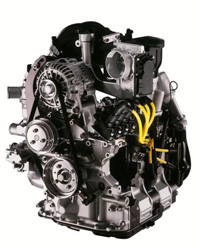C123D Engine Code Repair
Meaning of C123D engine trouble code is a kind of chassis trouble code and C123D code can be about replacing a broken oxygen sensor can eventually lead to a busted catalytic convertor which can cost upwards of $2,200. Taking your car into a shop will cost you around $210 depending on the car. However, an oxygen sensor is easy to replace on many cars and is usually detailed in the owner's manual. If you know where the sensor is, you only have to unclip the old sensor and replace it with a new one. Regardless of how you approach it, you should get this fixed right away.
C123D Fault Symptoms :
- Check engine light comes on
- Engine stalling or misfiring
- Engine performance issues
- Car not starting
If one of these reasons for C123D code is occuring now you should check C123D repair processes.
Now don't ask yourself; What should you do with C123D code ?
The solution is here :
C123D Possible Solution:

The firing order is an important part of the overall design of the engine and is determined during the design of the engine to eliminate as much engine vibration as possible. If the firing order is changed or adjusted, the ignition from the spark plug is delivered at the wrong time and the engine functions poorly or does not run. The firing order for a particular engine is typically found in the repair manual specific to that model.
C123D Code Meaning :
C
OBD-II Diagnostic Chassis (C) Trouble Code For Engine
1
Fuel And Air Metering
2
Fuel Rail/System Pressure - Too High
3
Turbocharger Boost Sensor A Circuit Low
d
The catalytic converter has an oxygen sensor in front and behind it. When the vehicle is warm and running in closed loop mode, the upstream oxygen sensor waveform reading should fluctuate.
C123D OBD-II Diagnostic Chassis (C) Trouble Code DescriptionC123D engine trouble code is about .Main reason For C123D CodeThe reason of C123D OBD-II Engine Trouble Code is Fuel Rail/System Pressure - Too High. |
C123D code on vehicles with electronically controlled automatic transmissions, the 3-4 shift solenoid is responsible for actuating the hydraulic circuits to activate clutches or bands that change gears inside the automatic transmission.
